Chess
Notes
|
| First column | << previous | Archives [74] | next >> | Current column |
6746. Jonny Quest
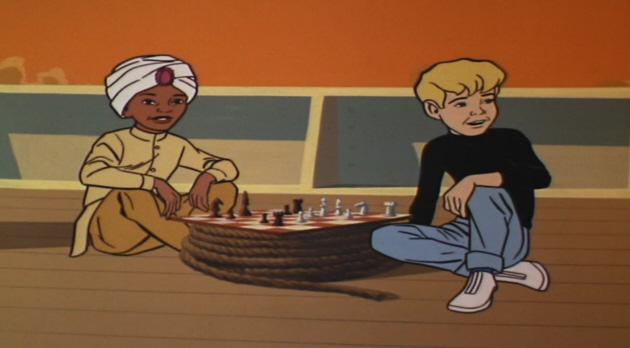
Few animated series have featured chess, but the above shot, showing Hadji and Jonny Quest, comes from ‘Dragons of Ashida’, an episode in the US production Jonny Quest (first broadcast in 1964-65).
At the start of another episode, ‘Attack of the Tree People’, Dr Benton Quest was playing chess with Race Bannon, while Jonny Quest and Hadji played checkers.
6747. Alexander v Marshall (C.N.s 3508, 5262, 6624 & 6653)
At last a 1920s source has been found, by Alan McGowan (Waterloo, Canada). From page 23 of Schachwart, February, 1929 (a magazine edited at that time by Kurt Richter):
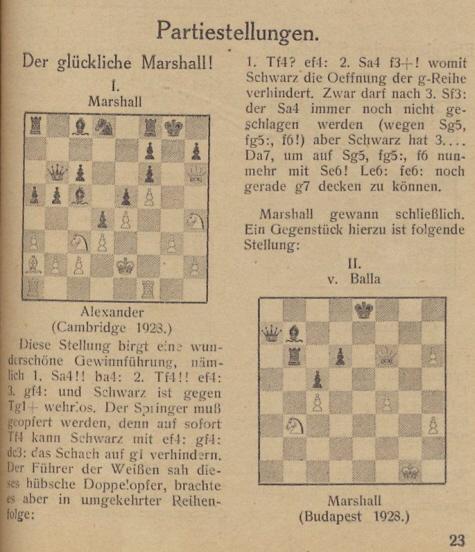
6748. Tal v Platonov (C.N. 6742)
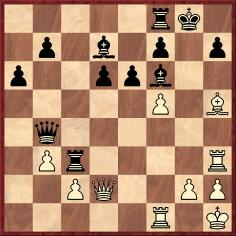
Roland Kensdale (Aberdeen, Scotland) was surprised when his computer-check evaluated the game as drawn after Tal’s move 22 Rg3+. The computer’s line runs 22...Bg7 (22...Kh8 23 Qh6 was the game continuation, and Black resigned; if 23...Rxg3 24 Bg6.) 23 Rxg7+ Kxg7 24 Qg5+ Kh8 25 Qf6+ with perpetual check. If, instead, White responds to 22...Bg7 with 23 f6 ...
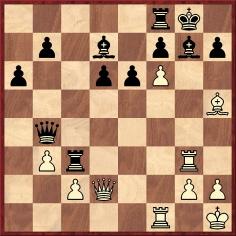
... Black has 23...Rf3.
We note that there was no mention of these lines on pages 85-86 of Tal’s Winning Chess Combinations by M. Tal and V. Khenkin (New York, 1979), but they did appear on page 70 of volume three of Alexander Khalifman’s ‘Chess Stars’ series on Tal (Sofia, 1996). The 23...Rf3 variation continued with 24 Rxg7+ Kh8 25 Qe2 Rxf1+ 26 Qxf1 Qc3, and Black was said to stand better.
6749. Bulgarian photographs
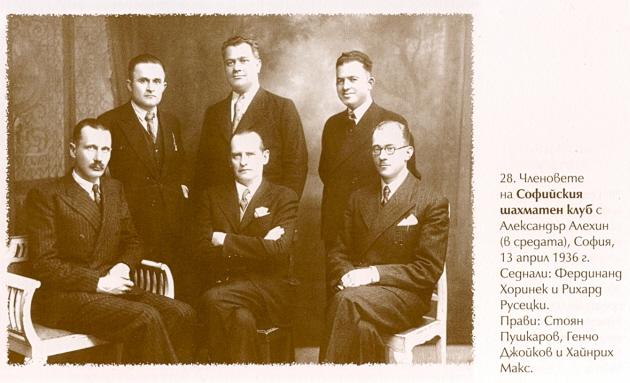
This group shot featuring Alekhine (Sofia, 13 April
1936) comes from Bulgarskiyat shakhmat v snimki by
S. Sergiev (Sofia, 2006). The book has, in all, 684
pictures, running through to the Topalov era, and can be
ordered from Karel Mokrý’s chess
bookshop (which was warmly recommended in C.N.
4737).
6750. Wood and Ritson Morry (C.N.s 6724, 6733 & 6736)
Michael McDowell (Westcliff-on-sea, England) points out that problems jointly composed by B.H. Wood and W. Ritson Morry were published in the Chess Amateur in 1930 (February, page 114; March, page 137):
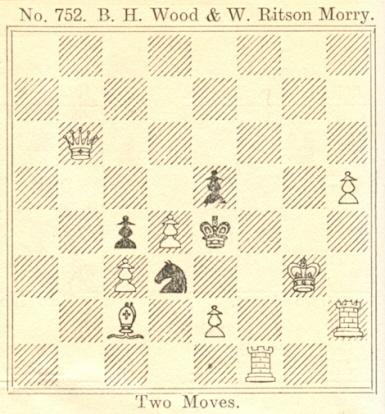
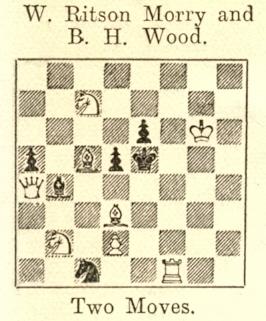
Page 138 had a solo problem by Ritson Morry:

6751. Quadrupled pawns
From The Spirit of the South, 18 May 1889 comes the following game, courtesy of John Hilbert (Amherst, NY, USA):
George Henry Mackenzie – Amateur‘Played some years ago in New York’
(Remove White’s queen’s rook.)
1 e4 e5 2 Nc3 Nf6 3 f4 exf4 4 Nf3 Bb4 5 e5 Bxc3 6 dxc3 Nh5 7 g4 fxg3 8 Bg5 f6 9 Nh4 O-O 10 Qxh5 fxg5 11 Bc4+ d5 12 exd6+ Rf7 13 Qxf7+ Kh8 14 Ng6+ hxg6
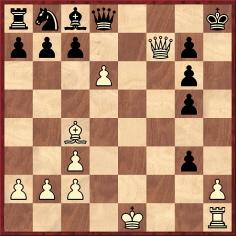
15 hxg3+ and mate next move.
6752. Lipschütz
Stephen Davies (Kallista, Australia) has been investigating further the question of S. Lipschütz’s forename and he summarizes his findings as follows:
‘1. Lipschütz’s US naturalization card
Forename: Salomon
Birth: 4 July 1863
Date of arrival in the United States: 4 September 1880
Witnessed by Nathan Lipschütz, his father.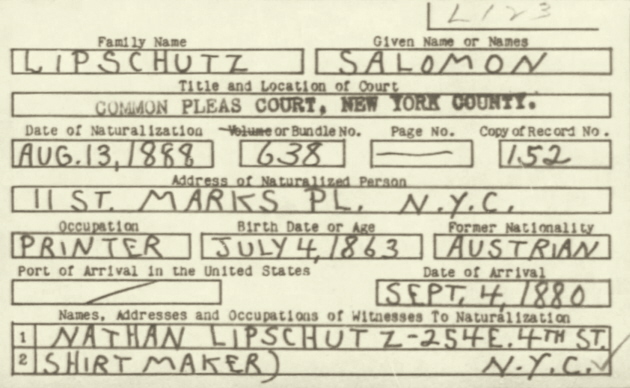
Source: ancestry.com
2. Passenger manifests of the SS Cimbria on departure from Hamburg (22 August 1880) and arrival at New York (4 September 1880)
Forename: Salom
Year of birth: 1861
The arrival manifest is that quoted by Anders Thulin in C.N. 3520. The date of arrival suggests that this is indeed S. Lipschütz the chessplayer, but whether “1861” was derived from an official document, a deliberate falsification or a mistake will probably never be known.
It is odd that his return from London in 1886 should also give an implied birth-year of 1861. Passports were not required in those days; Pillsbury applied for one (C.N. 6267), but I have not found an application by any other American chess figure of that era.3. 1900 Census
Forename: Samuel
Birth: August 1863
US arrival: 1881
He was living with his younger brother Frederick and the latter’s wife Malvina (or Malvine) at 154 Lenox Avenue (now Malcolm X Avenue), Manhattan.A possible explanation for the incorrect dates of birth and arrival in the United States is that he was not at home when the census-taker called and that the information was supplied by Malvina; she was unsure of the dates but knew him as Samuel.
As regards Philip Lipschütz, I have not yet found his dates of birth and death.
A person named Lipschütz but not Samuel (who was then in California) finished equal second in the general tournament of the 17th annual winter championship of the New York State Chess Association (NYSCA) on 22 February 1895 (New York Times, 23 February 1895, page 6.) The following month “F. Lipschutz” played for the Metropolitan Chess Club against the Manhattan Chess Club, an event which the New York Times (18 March 1895, page 6) stated was his début in public play.
An initial printed in a newspaper is unreliable. Whether either Philip or Frederick played in both events, or they each played in one, is unknown.
The pinnacle of Philip’s career may have been his equal first place in class A of the general tourney of the NYSCA winter championship of 1910 (American Chess Bulletin, March 1910, pages 61-62). However, the periodical gave him the initial “T.”.
The games attributed to “S. Lipschuetz” for the Rice Chess Club against Black and Selover of the Brooklyn Chess Club in February 1909 (American Chess Bulletin, March 1909, pages 60-61; April 1909, page 88; May 1909, page 113) were almost certainly played by Philip, given that the December 1909 issue of the Bulletin (page 276) listed him as an entrant in the Rice Chess Club’s annual handicap tournament. Salomon/Samuel had died in 1905.’
6753. Chigorin’s grave
Further to our Graves of Chess Masters article, Piotr Hoffmann (Srem, Poland) requests information about Chigorin’s resting place.
6754. Alekhine photograph
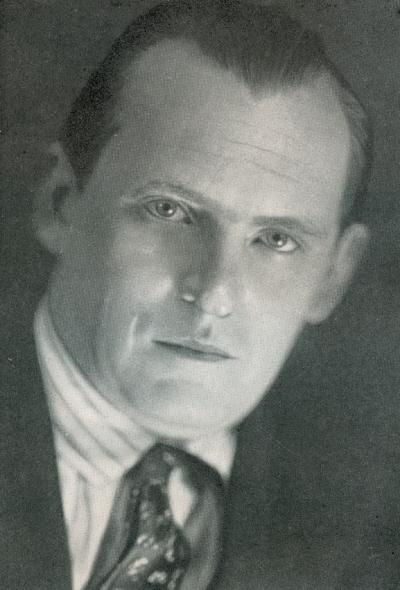
This photograph of Alexander Alekhine is surprisingly little-known, even though it was the frontispiece of his book Meine besten Partien (1908-1923), published by Walter de Gruyter & Co., Berlin and Leipzig in 1929.
6755. Another prodigy report
Jerry Spinrad (Nashville, TN, USA) submits this report
from the New York Sun, 1 April 1888, page 9:
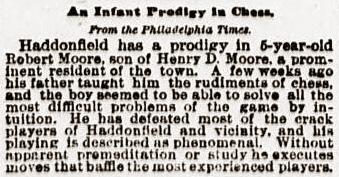
Our correspondent’s Internet searches have identified the ‘infant prodigy’ as Robert Thomas Moore (1882-1958), an eminent ornithologist and poet.
We note that his obituary on page 37 of the New York Times, 3 November 1958 also described him as the ‘retired research associate professor in vertebrate zoology of the California Institute of Technology and Occidental College’. His son was the explorer Terris Moore (1908-1993).
Information is sought concerning Robert Moore’s chess exploits, if any.
6756. Zugzwang
To our Zugzwang article we shall be adding this comment by C.J.S. Purdy on page 34 of the February 1960 Chess World:
‘Zugzwang just doesn’t happen in a middle-game. There is a win by Nimzowitsch against Sämisch in the middle-game which one annotator has called a “Zugzwang” finish. It is true that any move by Sämisch loses, but he would lose just as surely if his opponent had to move. It is not the compulsion to move that hurts him; his position is lost anyway. So it is no more Zugzwang than any other resignable position.’
6757. Three-mover
Further to our Steinitz Stuck and Capa Caught article, the composer of this three-mover reported that Steinitz and Mackenzie spent 20 minutes looking for the key move and had to be reassured that the problem was sound:
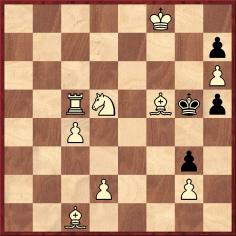
A follow-up item will supply the details.
6758.
Chigorin’s grave (C.N. 6753)
Some information about Chigorin’s grave is available in an article by his daughter which has recently come into circulation. Acknowledgement for this information: Wijnand Engelkes (Zeist, the Netherlands), Hassan Roger Sadeghi (Lausanne, Switzerland) and Stephen Wright (Vancouver, Canada).
6759. Tarrasch postcard
Maurice Carter (Fairborn, OH, USA) sends us from his collection a postcard written by Tarrasch on 18 December 1923 to Axel Lindström, regarding the imminent publication of the fourth edition of Die moderne Schachpartie (Leipzig, 1924), which Tarrasch dedicated to him:
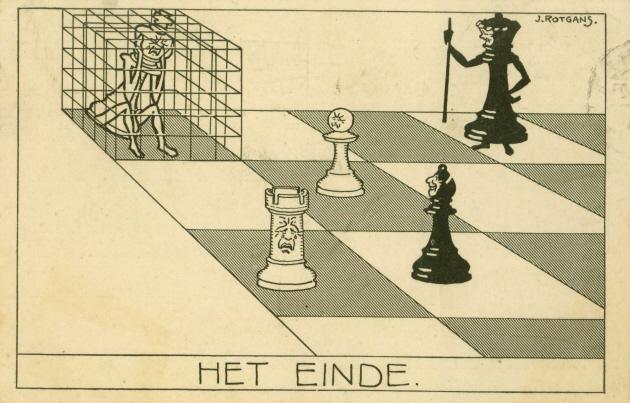
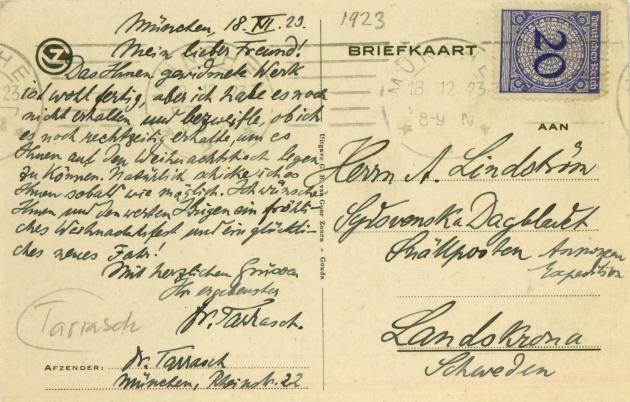
Mr Carter mentions that a small reproduction of the card appeared, together with a transcription, on page 675 of Siegbert Tarrasch Leben und Werk by Wolfgang Kamm (Unterhaching, 2004). He wonders whether it was Tarrasch’s personal postcard and whether other masters have had their own distinctive stationery.
The dedication in Tarrasch’s book:
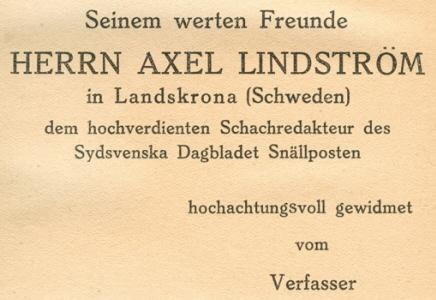
6760. London, 1932
Robert Sherwood (E. Dummerston, VT, USA) asks for information about the film referred to by W. Hatton Ward on page ix of his Introduction to Alekhine’s book on the London, 1932 tournament:
‘For a whole fortnight a Chess Congress held its ground as a popular London spectacle, and the enormous publicity secured was as advantageous to the game - possibly more so - as to the newspaper. Admission was free upon production of a ticket, and in addition to the usual army of photographers a sound film of the opening ceremony was taken by the Gaumont Coy., Ltd., and was exhibited at a large number of London and provincial cinema theatres.’
6761. The BM’s finest hour
This article by the Badmaster, G.H. Diggle, originally appeared in the June 1976 Newsflash:
‘The Badmaster always regards the year 1945 as “his finest hour”. The War was just over – no-one had been demobbed or seemed to be doing any work – plenty of chess was going on in London – and, best of all, there was no “grading” and “grandmaster” nonsense in those days, and chess impostors like the BM could put their names down for any Tournament they liked. A huge “mixed bag” of 128 players entered for the London Championship; these were reduced by four “knockout” rounds to eight; three well-known “seeded” players were added, and the resulting 11 then played “American” in the final. Believe it or not, the BM (through the vagaries of the draw) survived to be in the last eight; and for a glorious ten days he was in the news, competing with people like Sir George Thomas, Dr Aitken, Dr List, G. Wood and other experts.
The Tournament was won by G. Wood (though not everyone had backed him to do so); the Badmaster came bottom of the poll (and here every forecast was right). But, as the argumentative schoolboy in the Scripture Class pointed out in defence of “he that is least in the Kingdom of Heaven” – “anyhow he got there!”. Moreover, to this day the BM refuses to attribute the result to the superiority of his opponents – he lays the blame, fairly and squarely, on harassment by the Chess Press, who frightened him out of his wits. Every round, they adopted the following horrible procedure. Headed by the bearded Bohemian, William Winter, they came nosing round after the first half-dozen moves to see what was cooking. Like those ungodly persecutors in the 59th psalm, they “wandered up and down for meat”. Then the great Winter, after glancing for an awful moment over the petrified BM’s shoulder, would instantly recoil with a hissing intake of the breath, scribble some doomridden fragment in his notebook, and pass on to the next victim. Then the whole pack would troop off to a neighbouring bar. After they had gone, the BM would recover his nerve and make some brilliant combination which only just lost, and which the Press ought to have been there to report to the World. But as soon as his game was in the last throes, they would all come back. “And at evening”, to quote the psalmist once more, “they will return, grin like a dog, and run about the City”. The experienced Winter always gazed at the ruin of the BM’s position with a lacklustre but logically satisfied eye, reminding one of Lear’s famous limerick:
“There was an old man with a beard
Who said: “It is just as I feared.”’
A photograph from the tournament (showing J. Aitken, G.H. Diggle, Sir George Thomas and G. Wood) was given in C.N. 3766. Diggle finished not ‘bottom of the poll’ but tenth out of 11 players, 1½ points ahead of R.E. Hayley. The crosstable was published on page 284 of the December 1945 BCM and on page 53 of CHESS, December 1945. In the latter source the tournament winner, G. Wood, wrote:
Gabriel Wood – Geoffrey Harber Diggle‘Game No. 2 against Diggle requires very little comment. It was a Sicilian in which I had White and I played a variation I have often played before in which I exchange off all the minor pieces possible and rely on Black making some mistake with his pawns; this occurred, and I won a pawn with a simple win in the ending.’
London, October 1945
Sicilian Defence
1 e4 c5 2 Nf3 d6 3 d4 cxd4 4 Nxd4 Nf6 5 Nc3 g6 6 Be2 Nc6 7 Be3 Bg7 8 O-O O-O 9 Qd2 Ng4 10 Bxg4 Bxg4 11 Nxc6 bxc6 12 Bh6 Qa5 13 Bxg7 Kxg7 14 Qd4+ Kg8 15 b3 Rab8 16 Rfe1 Qb6 17 Qd2 Kg7 18 Qg5 Qd4 19 Re3 h5 20 Qxe7 Rfe8 21 Qh4 Qe5 22 h3 Bc8 23 Rd1 Ba6 24 Qg3 Qxg3 25 Rxg3 Re6 26 Re3 Kf6 27 Rxd6 Rxd6 28 e5+ Ke6 29 exd6+ Kxd6 30 Ne4+ Kc7 31 Ng5 Rd8 32 Nxf7 Rd1+ 33 Kh2 Rd2 34 Rc3 Rxf2 35 Ne5 Rf6 36 Kg3 Bc8 37 h4 Bf5 38 b4 Kb6 39 Rc5 Bc8 40 a4 Bf5 41 c4 Bc8 42 a5+ Kb7 43 b5 cxb5 44 cxb5 Kb8 45 Nc6+ Resigns.
6762.
Three-mover (C.N. 6757)
The problem in C.N. 6757, by Will H. Lyons, was published on page 104 of his book Chess-Nut Burrs (Newport, 1886):
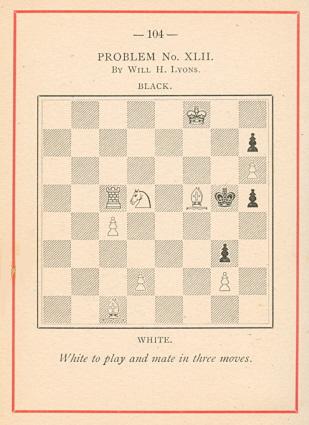
It was criticized by F.M. Teed on page 11 of the January 1886 International Chess Magazine, and on page 70 of the March issue Lyons responded:
‘No. 42, by myself, is stigmatized as “afflicted by inexcusable duals”. It contains a few duals of the unimportant kind; any attempt to remove them would likely have made a patchwork of the problem and done harm instead of good. The problem is one of my best. Mr Steinitz and Capt. Mackenzie spent 20 minutes over the key move after being several times assured that it had a key and was sound.’
6763. Bent Larsen (1935-2010)
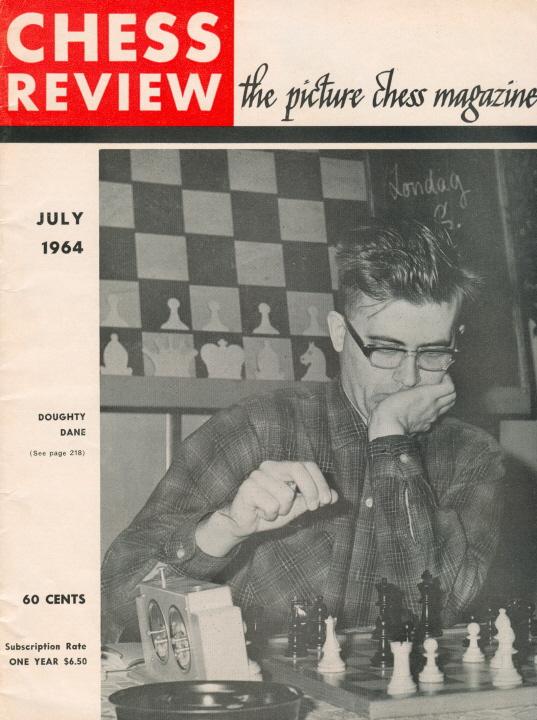

Chess Life, August 1966, front cover
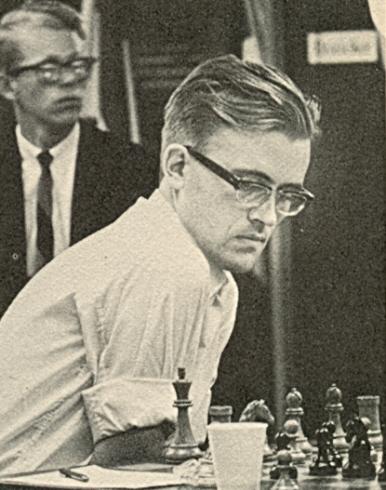
Second Piatigorsky Cup (Los Angeles, 1968), page xv
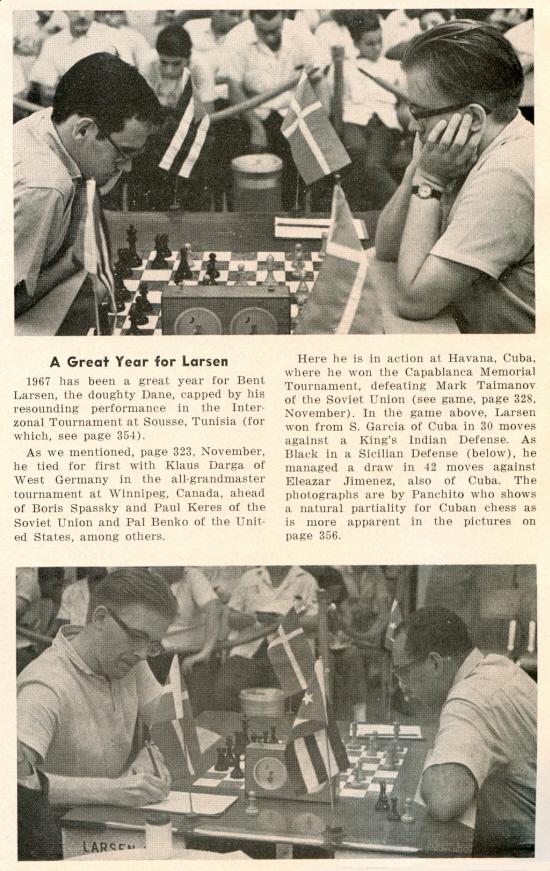
Chess Review, December 1967, page 355
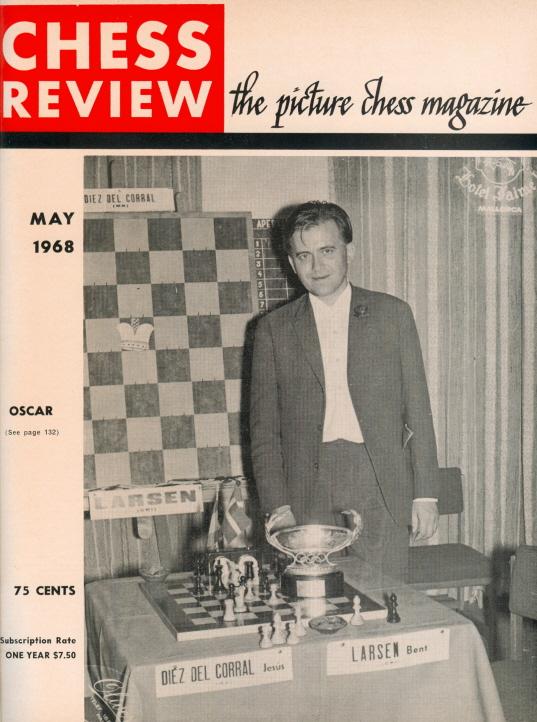

Chess Review, July 1968, page 195

Schweizerische Schachzeitung, November-December 1968, page 227
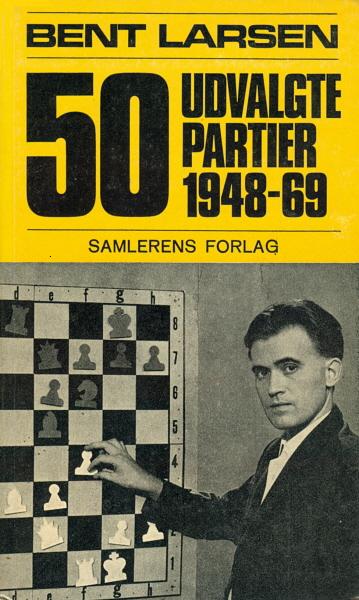
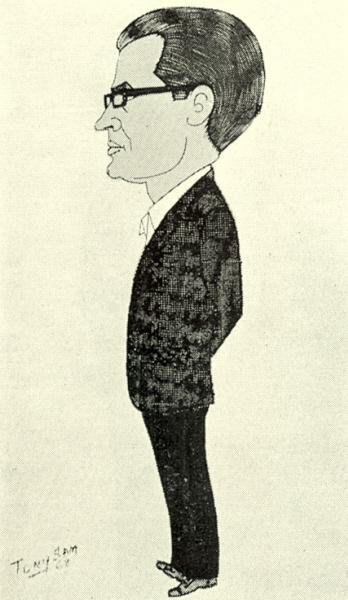
Palma de Mallorca, 1969 tournament book
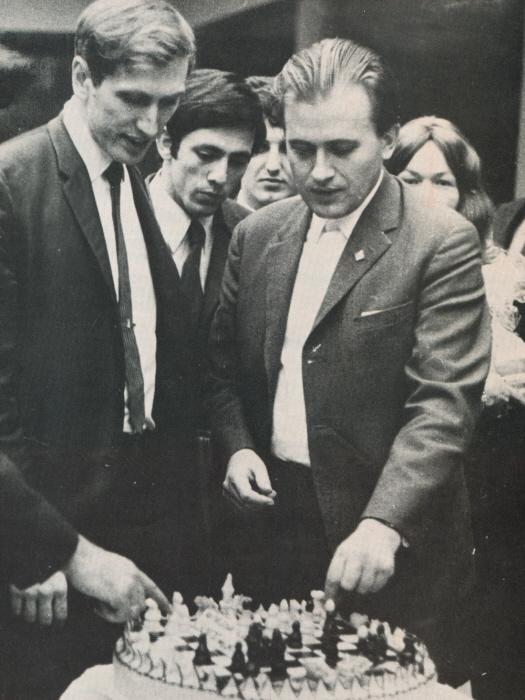
Fischer and Larsen, Chess Life & Review, July 1970, front cover
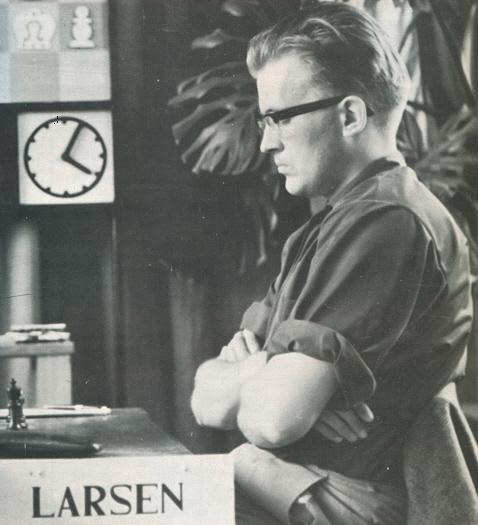
Chess Life & Review, October 1970, front cover
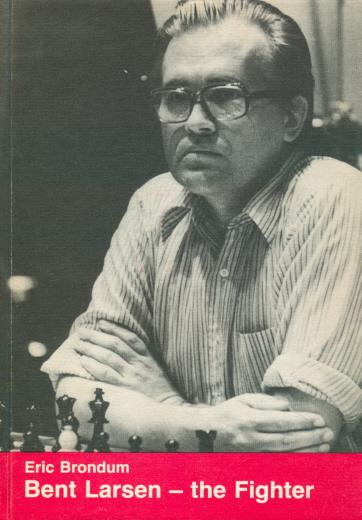
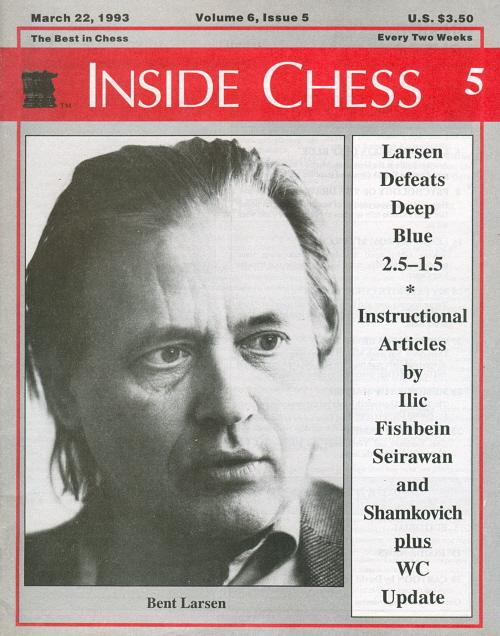
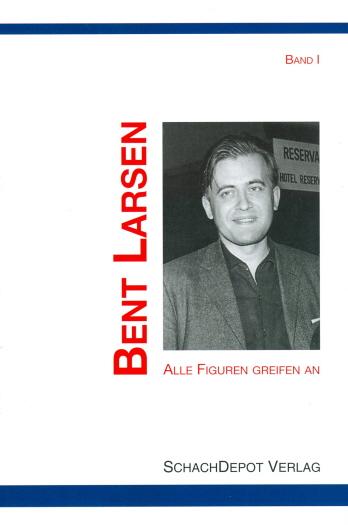
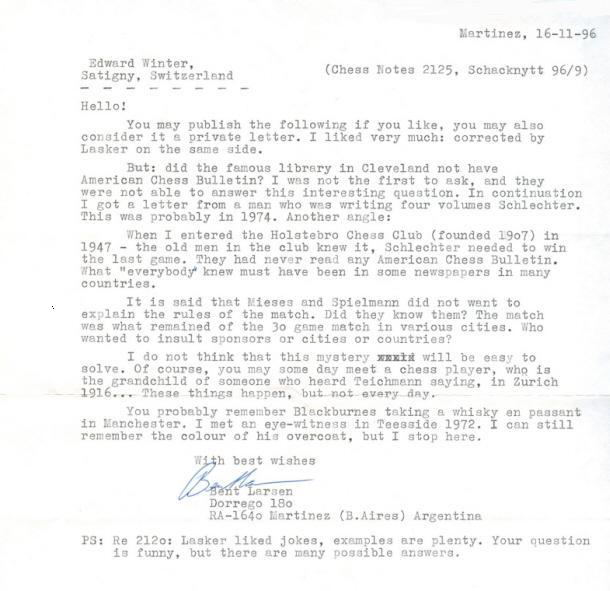
The letter below came in response to an enquiry from us about a published report on how many languages he spoke (see C.N. 4731):

6764. Interviews with Larsen
In an interview conducted by Jerry Hanken and published on pages 354-355 of the July 1978 Chess Life & Review Bent Larsen was asked about his first recollections of chess. His reply:
‘Well, I think I remember one of the first games I played against this boy who taught me ... I was six, almost seven, and I remember he taught me the rules and then we played. At the end he had two rooks and I had nothing, and he forced my king out to the edge of the board and mated ... I know which piece of chess news was the first one I saw in the newspapers. That was in ’46 but I’m already 11 at the time. The photo of the dead Alekhine in his cold hotel room, with his overcoat on and half-empty plate and head up ... Very famous photo, and it gave rise to a lot of speculations about how he died and maybe suicide, and so on.’
See also page 1 of Larsen’s Selected Games of Chess 1948-69 (London, 1970) and a brief interview in Kingpin.

The interview with Hanken took place at Lone Pine, 1978, and regarding his performance in that tournament Larsen stated: ‘A very good game without any risk was my game against Stean in the penultimate round. That was a very good piece of work.’
A decade earlier, Chess Life (December 1968, pages 435-438) published interviews with Larsen by Ben Crane and Jude Acers. Larsen was particularly critical of the organization of his Semi-Final Candidates’ match against Spassky in Malmö earlier that year:

Asked about his best game in the last year, Larsen replied: ‘...one of the best games I’ve played was my win against Gligorić in the Capablanca tournament. ... Another one was against Ivkov in Palma de Mallorca.’ As regards the best game of his career to date, he commented:
‘One of the best was against Geller in the Copenhagen tournament of 1960. Another was against Ivkov in Beverwijk, 1964. A third was in the Moscow Olympiad, 1956 against Gligorić. And of course there are the two games I won against Petrosian in the Piatigorsky Cup, and of these two games I rate the long one, without the queen sacrifice, as the better. But both games are very nice. ... if I should mention one, it would probably be either the game against Geller in 1960 or the one with Black against Petrosian in the Piatigorsky Cup.’
Larsen was also asked whether he had ‘any advice to aspiring masters’. His reply:
‘I think most of them study too much opening theory, and they should study more games by masters with annotations by masters.’
Regarding the best world zonal system, Larsen’s proposal was:
‘A panel of experts in FIDE would vote the eight strongest players into a tournament among themselves, preferably a double-round-robin. The selection of the eight would not be difficult at all. ... At present, Fischer, Spassky, Ivkov, Portisch, Petrosian, Korchnoi, Tal and myself. But don’t misunderstand, I greatly admire Botvinnik for remaining one of the world’s leading players.’
Another question was whether Larsen thought that the grandmaster title had been cheapened by the standards which FIDE set:
‘In the last ten years, yes. Many so-called grandmasters are not worthy of the title.’
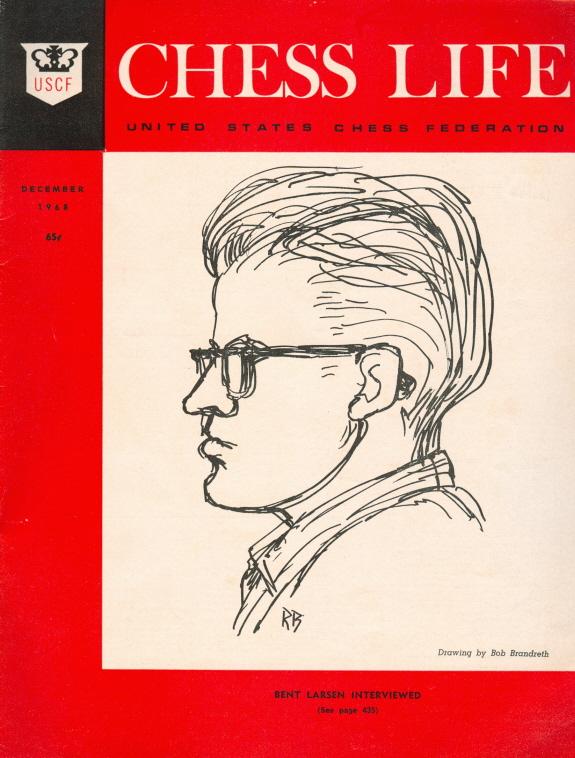
Some further quotes:
‘I don’t care very much for miniatures. I don’t try to beat my opponents quickly because if they are strong I think I should respect them. It’s too risky to play very sharply to beat them in 20 moves.’
‘Botvinnik has never had very high respect for my play. One of the reasons is that he thinks I play too many different openings, and that I don’t concentrate enough on one or two openings like he did himself when he was younger.’
‘It is certainly true that he [Petrosian] isn’t much of a world champion, but I think it is proper that the title is decided in a long match. I am sure others feel that they are the strongest in the world. I certainly feel this way, so does Fischer, Spassky certainly. But Petrosian is, perhaps, the best match player.’
‘As you know, I always have confidence and I always try to win. I never make deals and I always compete to the end. I have the impression that I am willing to work on theory more than my opponents, particularly in the openings, but in the endgame as well. At Sousse no-one was quite sure if Reshevsky could hold a bad queen and pawn ending. They all found it out later. It is learning from practice, something inactive masters cannot get.’
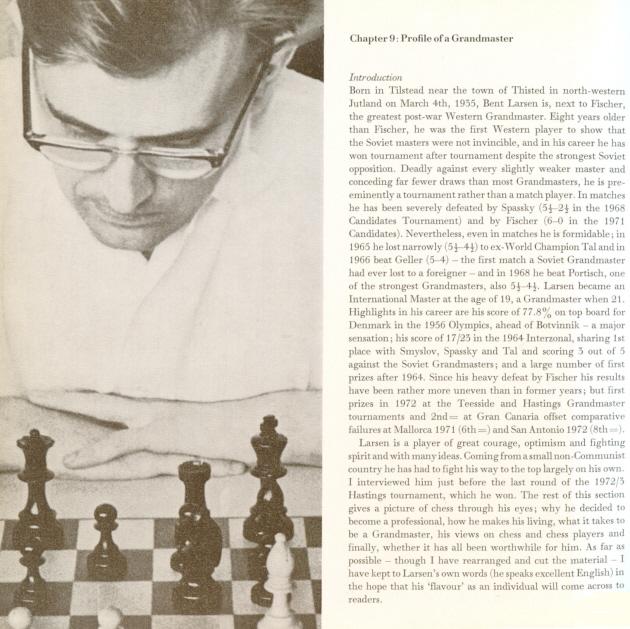
The best and most detailed interview with Larsen that we have seen was presented by C.H.O’D. Alexander on pages 86-94 of A Book of Chess (London, 1973) under the heading ‘Profile of a Grandmaster’. It took place shortly before the last round of Hastings, 1972-73:
‘I said once that I got a third of my income from tournaments, a third from exhibitions and a third from writing, but that is a very rough average – it varies very much from year to year. I make over £5,000 in a year, less than £10,000.’
Alexander asked whether exhibitions and writing about chess affected his play:
‘Exhibitions do not matter; they have nothing to do with the chess you play in tournaments. But writing is much more dangerous. The worst case was when I wrote my 50 Selected Games. My wife brought the English MS to the post office just the day I left for Puerto Rico. At Puerto Rico, I had original ideas – that was not the trouble – but in some games I suddenly realized that I had played stupidly and my opponent had played stupidly and that this game should never be published – and then I lost all interest and played terribly. I became too much of a perfectionist. I lost many games because of this.’
A further selection of quotes:
‘The main thing is not to be afraid of losing. Why should I be afraid? Although chess is my profession and a very important part of my life, if I lose I know two things: first, it is only a game, and second, by taking the risks I do I will win more than I lose. For some masters losing at chess is almost like dying; for me this is absolutely not so.’
‘... although I am famous for taking risks, I don’t usually take very much of a risk; unlike Tal – who doesn’t care whether his position is good or bad if only it is complicated enough – I don’t like bad positions.’
‘Tal and Korchnoi were probably born with a greater gift for analysis than I was, and I was born with a greater gift than Smyslov or Petrosian; and in positional insight it is the other way round. Korchnoi is fantastic at calculating complex variations, especially when he is hard pressed; but he must analyse because his judgment when he doesn’t calculate is very bad – he has to get through a lot of variations before he knows what’s happening.’
‘Bronstein has influenced me – maybe Keres, but not so much; I like Keres’ book but I do not admire Keres as a chess artist. Keres is not an artist, he is a practical player. As a young player he was practical in a different way; his brilliancies were all rather conventional. I doubt that he has ever tried to be an artist and if he has he gave it up in the Second World War – and also gave up the hope of becoming world champion. I mean the following: Keres said to me once: “Sometimes I sit for 20 minutes and I know that some spectators are thinking that now there is something very deep coming: you know what’s happening? I can’t find any ideas and I am taking a nap – except for snoring and closing my eyes.” A player like Bronstein would never do that; he would be trying all the time.’
‘If there is time enough for both adjournment analysis and sleep, I find seconds only useful as life guards (keeping disturbances away), shoe shiners and errand boys. I would not like to rely on analysis by somebody else.’
‘If I were put back in the early 1920s, it would be easy, very easy, to be world champion. There would be many draws, but in enough of the games I would get opponents into positions they didn’t understand. Most people find this arrogant – but now we know so much more. If we take positions they understand, we are not better; but we know more types of position. It is a matter of selecting the right openings. Of course, the 1920s was a period of breakthrough in ideas; it would be much easier still if you went back to the early 1900s. The first real uncertainty is with Alekhine; he didn’t want to play the new openings – he didn’t like them – but he worked hard at them and he developed. Alekhine was not basically creative – he was a practical player, but he learnt from others. Not Capablanca – he had difficulty with the new openings in his later years.’
‘The Fischer/Spassky match was not a bad match – although these title matches are never good. People forget that because they remember the best games.’
‘In spite of my 6-0 defeat at Denver [against Fischer in 1971], I think that I would have a better chance than Spassky. It is true that I am a better tournament than match player, but I think that I am learning to play matches. At Denver it was very hot and dry, and this climate did not suit me. Yes, I think that I would have a chance in another match with Fischer; I do not think he is technically superior. After all, he is only 3-2 up against me in other games.’
‘I think that it would be very easy to have a world championship and a Candidates’ tournament every second year. One could use Elo ratings for selection, or, better, a committee which used the Elo ratings when there was nothing special against them. Select 16 players – four will be surprised and pleased that they are considered as world championship candidates and nearly all the others will certainly be the right choices; everyone will be satisfied – except the little countries which want a system which will include their players in a world championship. In the Olympiads I did not play this year because I am in principle against individual Elo ratings for games in international team tournaments. It does not hurt me personally, but they should not count because the situation is different in team events; you must play for the team score. But these little countries whose players never go abroad like their players to have a rating – so they love it.’
‘The trouble is that FIDE is a very weak organization. It has no money – and therefore makes no money.’
‘At Hastings about a quarter of all male spectators seem to rattle coins in their pockets – even if they sit in the first row. In Yugoslavia they will applaud if Tal sacrifices his queen – that is different.’
‘In England chess writing is a special thing; English players write when they are 20 – it is too young. It is very bad for their chess. In other countries they do not become writers so early.’
‘Being a professional you are very much your own boss and that is very important for me. If you feel you are playing interesting, creative and original chess then – why ask what you get out of it? No-one asks a painter or a violinist – it is accepted; why ask the chessplayer?’
‘Do I worry about my play when I’m 50? I think about it – but it doesn’t worry me very much. I shall probably be the strongest 50-year-old ever. Yes, that is a typical piece of optimism and it may not come true – that is largely a health problem. But I shall be one of the strongest – and I think that I shall win more tournaments than anyone else has done at 50.’
‘Advice? I would not advise someone whether to become a professional or not – I don’t give people that kind of advice; a man must make up his own mind. But if he had decided to become one, then I would certainly tell him that the most essential thing is to fight – and treat the first five years as training. Don’t accept a draw when Petrosian offers it – and don’t worry if you lose afterwards. It is a worse defeat to accept a draw prematurely than to lose – that they must get used to. Writing? That is a difficult problem, because it will help him to earn a living, but too much is bad for play. But don’t take a premature draw. Never.’
6765. Carlos Torre
C.N. 5759 gave a rare photograph from Carlos Torre’s later years, and below is another one:
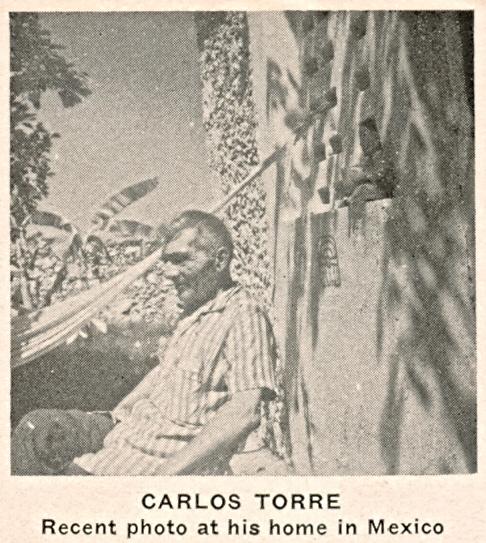
Source: Chess Review, June 1964, page 165.
6766. Otho Michaelis (1843-90)
From John Hilbert (Amherst, NY, USA):
‘I have managed to put together about 120 Michaelis games, and hope one day to write a small work on him much like the book on James A. Leonard. A fascinating life in every respect, from his Civil War career (going along with Sherman on his campaign, including the burning of Atlanta and the famous, or infamous, march to the sea), to his identifying at least one body the day after the Custer massacre at Little Big Horn, to his apparently being the first white man to spend the night on top of Mount Whitney in California, in the 1880s. He and his wife also translated a life of Alfred Krupp.’
Below, from our collection, is the title-page of the translation:
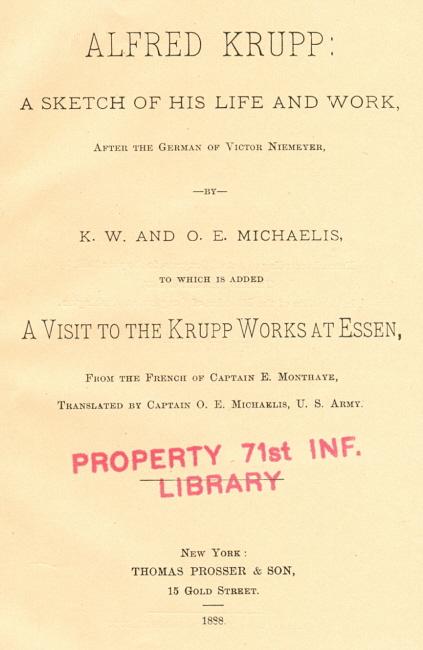
6767. Edmund Hoyle (1672-1769)
What is known for certain about the chess expertise of Edmund Hoyle?
On page 21 of Great Moments in Chess (New York, 1963) Fred Reinfeld wrote: ‘Though Hoyle did not himself play chess, his works were considered the bible of chessplayers.’ H.J.R. Murray’s A History of Chess (Oxford, 1913) discussed Hoyle on pages 850-851 and concluded:
‘It is evident that the reputation of Hoyle’s Games has never rested upon the section on chess.
The games in Hoyle’s lectures are for the most part puerile and played in a spirit totally opposed to the rules which he gave in his chess books. He was not a chessplayer, and what merit there is in his Rules and Observations is due to the fidelity with which he recorded the advice of better players than himself.’
The Reinfeld and Murray books both gave Hoyle’s year of birth as 1679 instead of 1672.
6768. ‘Immortal Zugzwang Game’
Regarding Sämisch v Nimzowitsch, Copenhagen, 1923, page 111 of The Mammoth Book of The World’s Greatest Chess Games by G. Burgess, J. Nunn and J. Emms (London, 1998, 2004 and 2010) states:
‘Emanuel Lasker hailed this as the “Immortal Zugzwang Game”.’
As shown in our Zugzwang article, we are aware of no instance of Lasker’s having used that exact phrase.
6769. Father and son – but who?
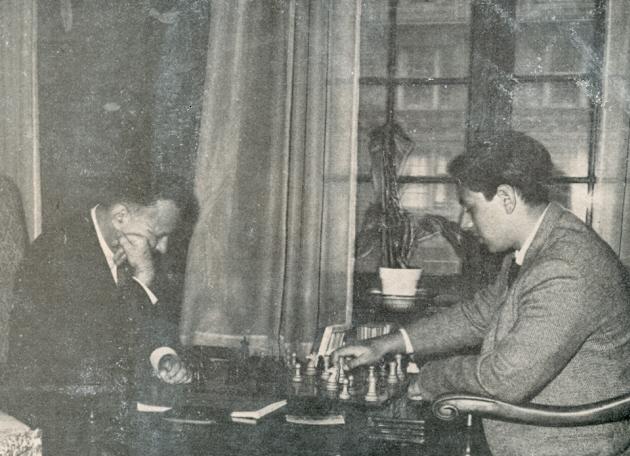
6770. Lasker in Buenos Aires
Eduardo Bauzá Mercére (New York, NY, USA) has sent us a PGN file of all available games (a total of 28) played by Emanuel Lasker in Buenos Aires in 1910. Sources are given, of course. The following exhibition games, found in the daily newspaper La Nación, were not included in The Collected Games of Emanuel Lasker by K. Whyld (Nottingham, 1998): Portela v Lasker; Lasker v Gelly; Portela v Lasker; Blixen v Lasker; Zamudio v Lasker; Lasker v Howell; Romero v Lasker.
Our correspondent adds:
‘Game 985 in Whyld’s book was played on 19 June, not 17 July, and R. Illa was Ricardo Illa, the brother of the stronger player Rolando.
Lasker’s three results in simultaneous displays were: 19 June 1910: +25 –2 =4; 10 July 1910: +30 –0 =0; 17 July 1910: +10 –0 =2 (against 12 strong opponents, most of whom had played against him in the exhibition games).’
Mr Bauzá Mercére also supplies this photograph, which was published between pages 68 and 69 of the July-September 1910 issue of the Revista del Club Argentino de Ajedrez:
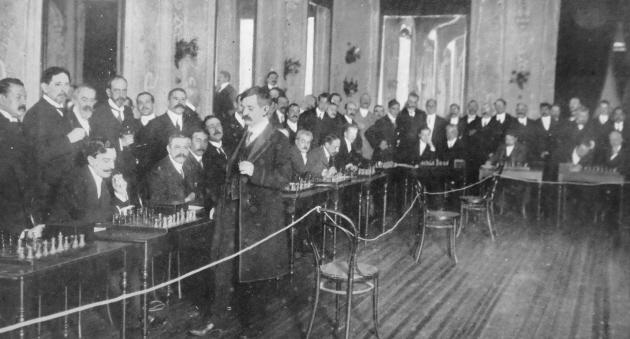
6771. Computer-generated
C.N. 6380 referred to ‘a series of books which, self-confessedly, are no more than grab-bags of Wikipedia entries’. It is becoming increasingly common to find Wikipedia spit-outs, and the worst so far must surely be this:
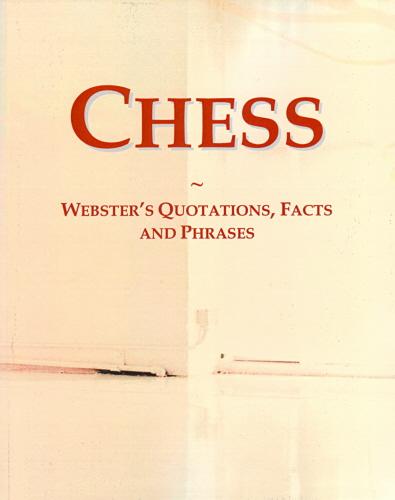
Chess Webster’s Quotations, Facts and Phrases (251 pages) says that it was published by ICON Group International, Inc., San Diego, CA, USA (‘Copyright © 2008 by Philip M. Parker’), although it seems to have appeared only recently, as part of a large series on various subjects. The final page states: ‘Printed in Great Britain by Amazon.co.uk, Ltd., Marston Gate’.
This calamitous volume comprises random snippets robotically slashed out of such sources as Webster’s Online Dictionary, Wikipedia and WordNet. During a 45-minute flick-through (self-imposed time-limit) we came upon such entries as this (page 44):

Similarly, page 57 says that Capablanca authored Capablanca’s Hundred Best Games of Chess by H. Golombek, a book supposedly published in 1972.
Page 151 states that by the time Blackburne defeated Nimzowitsch at St Petersburg (the date 1914 is omitted) ‘he was concentrating on writing his chess column for “The Field”, a position he held up until his death in 1924 at the age of 82’. Blackburne has been muddled with Burn. Page 201 refers to ‘Joseph Henry Blackburne (1859-1951)’. Blackburne has been muddled with Blake. Page 199 offers, from WordNet, three-line entries for Karpov and Kasparov. Karpov’s entry gives the impression that Kasparov was born in 1951; Kasparov’s entry gives the impression that Karpov was born in 1963.
The mindless cut-and-paste (in a book which has no illustrations or diagrams) is apparent from an entry for ‘Novotny’ (from ‘WP’, i.e. Wikipedia) on page 158:
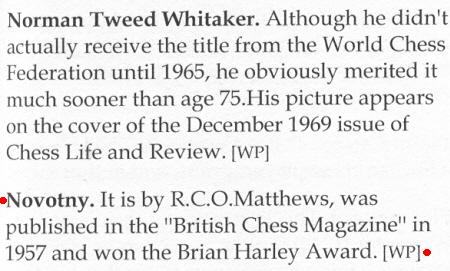
An entry for Fischer on page 138, also courtesy of Wikipedia, starts towards the end of an unidentified and unexplained quote:

In fact, any mention of ‘chess’ in Wikipedia et al. may result in an entry in this Webster book, as demonstrated by page 219:
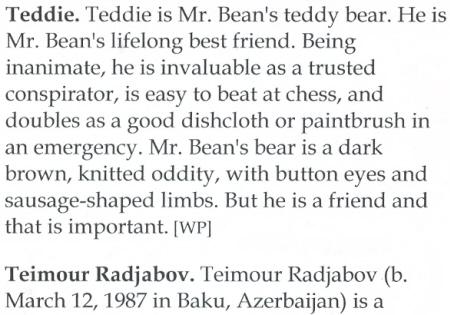
The 22-page index has also been generated automatically, of course, and seems to contain entries for most words in the book which begin with a capital letter, including ‘Bob’, ‘Der’, ‘Foreword’, ‘Kasparows’, ‘Mes’,‘Miscellaneous’, ‘Mrs’, ‘Produced’, ‘Strange’ and ‘Tuesday’.
6772. Father and son (C.N. 6769)

This photograph was published on page 67 of the March 1967 Chess Review with the following caption:
‘Two generations of chess: Dr Reuben Fine and his son Benjamin, authors of The Teenage Chess Book, are caught in this double-Fine photograph by Edward Lasker.’
The dust-jacket of the book (whose title page stated ‘by Reuben Fine with the assistance of Benjamin Fine’) had a further photograph taken by Lasker:
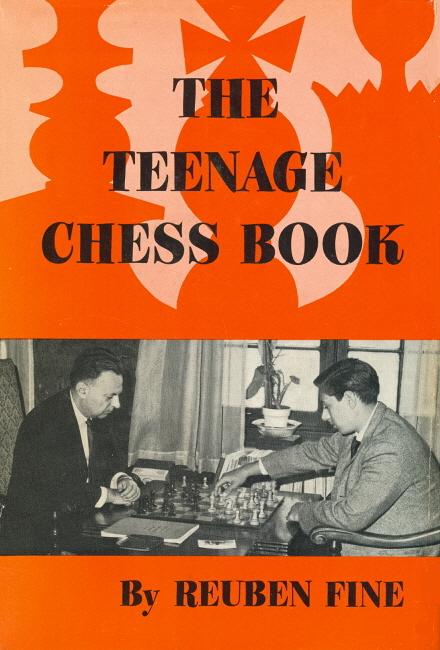
Below is the inscription in one of our copies of that
first edition of The Teenage Chess Book (New
York, 1965):
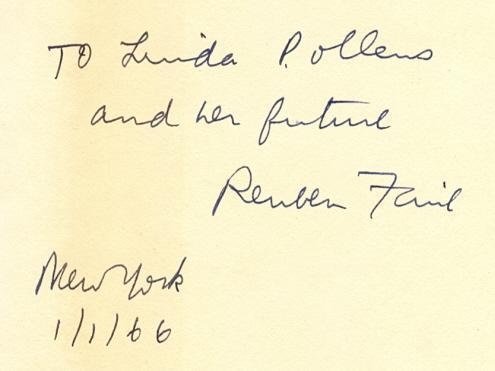
6773. Rook ending
Richard J. Hervert (Aberdeen, MD, USA) raises the subject of this position from Capablanca’s second game against Fine in the 1938 AVRO tournament:
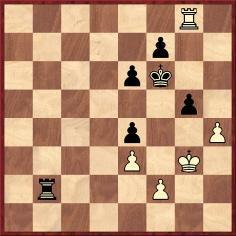
In reply to 39...hxg5 Capablanca played 40 Rxg5.
Our discussion of the matter in C.N. 2907 has just been placed online as a feature article, entitled Capablanca v Fine: A Missed Win.
6774. Henry Augustus Loveday
This illustration comes from opposite page 343 of the August 1925 BCM:
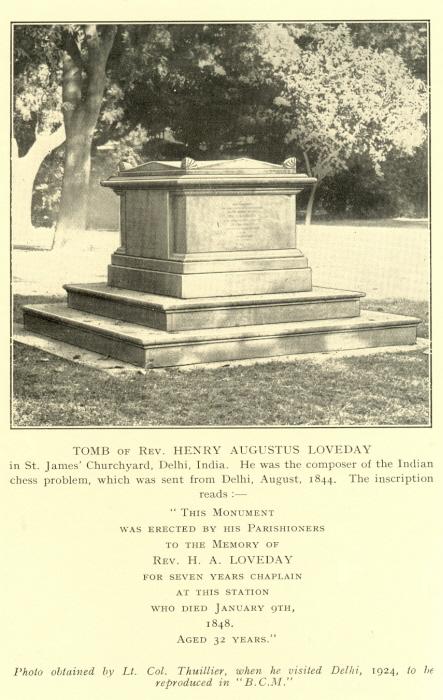
6775. Guinness
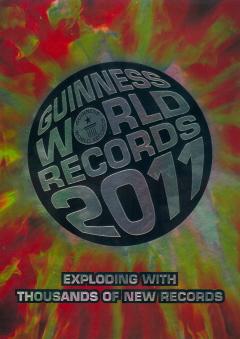
The 2011 edition of Guinness World Records has three items on chess: on page 74, a reference to the 269-move game listed in the 2006 volume; on page 146, three lines plus a photograph regarding Morteza Mahjoob’s 500-board simultaneous display in 2009 (see Chess Records); on page 204, a reference to the largest chess set.
The chess set (Canadian) is only slightly larger than the one from California recorded in the 2007 volume and hardly seems a sensational record-holder. The board, on each side, is 5.89m, and the king is 1.19m tall and 37.4cm wide.
6776. Bogoljubow v Réti
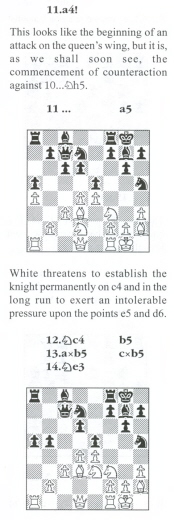
The above (concerning the game Bogoljubow v Réti, Berlin, February 1919) comes from page 115 of Modern Ideas in Chess by R. Réti (Milford, 2009) – a ‘21st Century Edition’ edited by Bruce Alberston.
What was known in the twentieth century is that page 157 of the English-language edition of Réti’s book in the descriptive notation (London, 1923 and London, 1943) erred by giving 11...P-R4 instead of 11...P-QR3. The double pawn move makes no sense, since the b5-pawn would remain continuously en prise later in the game. The error in the game-score was pointed out by Bernard Cafferty on page 215 of the May 1982 BCM.
We add that 11...a6 was given correctly on page 98 of the original German edition, Die neuen Ideen im Schachspiel (Vienna, 1922), as well as in such sources as page 229 of the November 1919 Deutsche Schachzeitung and page 30 of Schachjahrbuch 1919 by L. Bachmann (Ansbach, 1920).
The ‘21st Century Edition’ has added many diagrams to the game, with the black a-pawn consistently misplaced on a5.
When planning to reprint or otherwise reissue an old book, publishers could easily make an open appeal for information about errors which anyone may have marked in his copy of the original. Yet publishers do not do so. Why not?
6777. Marshall Gambit
We are still trying to determine when the Frere v Marshall game first appeared with the date 1917, i.e. the year before the Marshall Gambit was played by the US champion against Capablanca. The earliest instance found so far remains pages 238-239 of 1000 Best Short Games of Chess by Irving Chernev (New York, 1955):
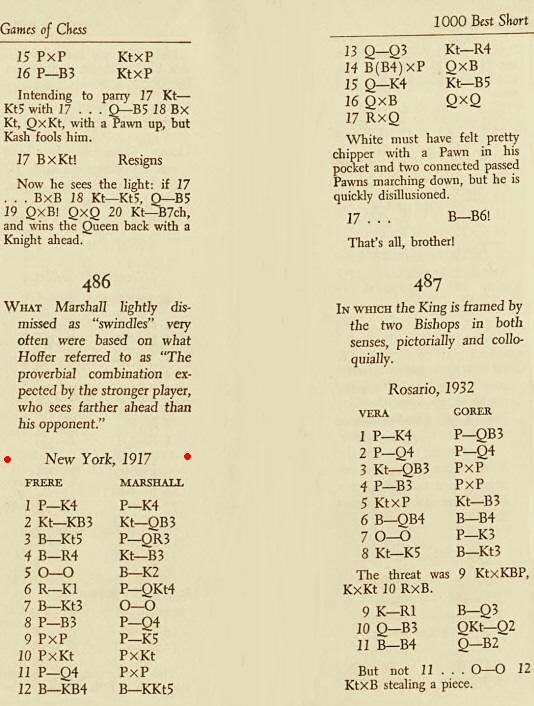
On page 11 of the January 1983 Chess Life A. Soltis wrote regarding the opening of Capablanca v Marshall, New York, 1918:
‘But how much of a surprise was it really? A year before his attempt at revenge against Capablanca, Marshall saw this game published ...’
There followed Frere v Marshall, ‘New York, 1917’. Mr Soltis’ account being devoid of any sources, it can only be wondered on what specific grounds he stated that Marshall saw the Frere-Marshall game published in 1917. Our feature article mentions that we have found the game nowhere prior to Marshall’s Comparative Chess (Philadelphia, 1932), a book which, moreover, gave the game datelessly.
6778. Slugfest
We note a particularly entertaining slugfest in Richard Forster’s column, entitled ‘Das Zürcher Juwel’, on page 74 of the Neue Zürcher Zeitung, 25 September 2010:
Dulamsuren Yanjindulan (Mongolia) – Tamar
Tsereteli (Georgia)
Zurich, 10 September 2010
Sicilian Defence
1 e4 c5 2 c3 d5 3 exd5 Qxd5 4 d4 Nc6 5 Nf3 Bg4 6 dxc5 Qxd1+ 7 Kxd1 e5 8 b4 a5 9 Bb5 axb4 10 Bxc6+ bxc6 11 cxb4 e4 12 h3 exf3 13 hxg4 fxg2 14 Rg1 O-O-O+ 15 Kc2 Rd4 16 Kb3 Rxg4 17 Nd2 h5 18 Nc4 h4 19 Ne5 Re4 20 Nxf7 h3 21 Nxh8
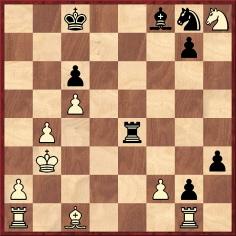
21...Rh4 22 Ng6 h2
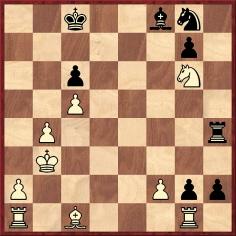
23 Bg5 Rh3+ 24 Ka4 h1Q 25 Nxf8 Qh2 26 Rad1 Nf6 27 Bxf6 gxf6 28 Nd7 Rh7 29 Nb6+ Kb8 30 Rd8+ Kb7 31 Rdd1 Rg7 32 Nc4 Kc7 33 Nb6 Qf4
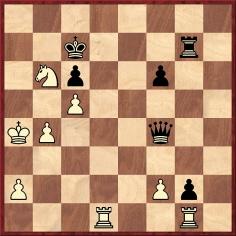
34 Rxg2 Rxg2 35 Rd7+ Kb8 36 Rd8+ Kb7 37 Rd7+ Ka6
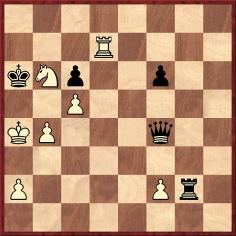
38 Na8 Rg8 39 Nc7+ Kb7 40 Ne6+ Kc8 41 Nxf4 Kxd7 42 Kb3 Rg4 43 Nd3 Ke6 44 a4 Rd4 45 Kc3 Kd5 46 b5 Rxa4 47 b6 Ra3+ 48 Kc2 Ra5 49 Kc3 Rb5 50 f3 f5 51 f4 Ra5 52 b7 Rb5 53 Nb4+ Ke4 54 Nxc6 Rxb7 55 Nd4 Kxf4 56 c6 Rb8 57 Kc4 Ke4 58 Kc5 f4 59 Ne6 f3 60 Ng5+ Ke3 61 Nxf3 Kxf3 62 c7 Rg8 63 Kc6 Ke4 64 Kb7 Kd5 65 c8(Q) Rxc8 66 Kxc8 Drawn.
The game, played on board three in round seven of the women’s section of the 11th World University Chess Championship, won the brilliancy prize. Mr Forster observes that 38 Na8 is an extraordinary way of securing a draw.
| First column | << previous | Archives [74] | next >> | Current column |
Copyright: Edward Winter. All rights reserved.